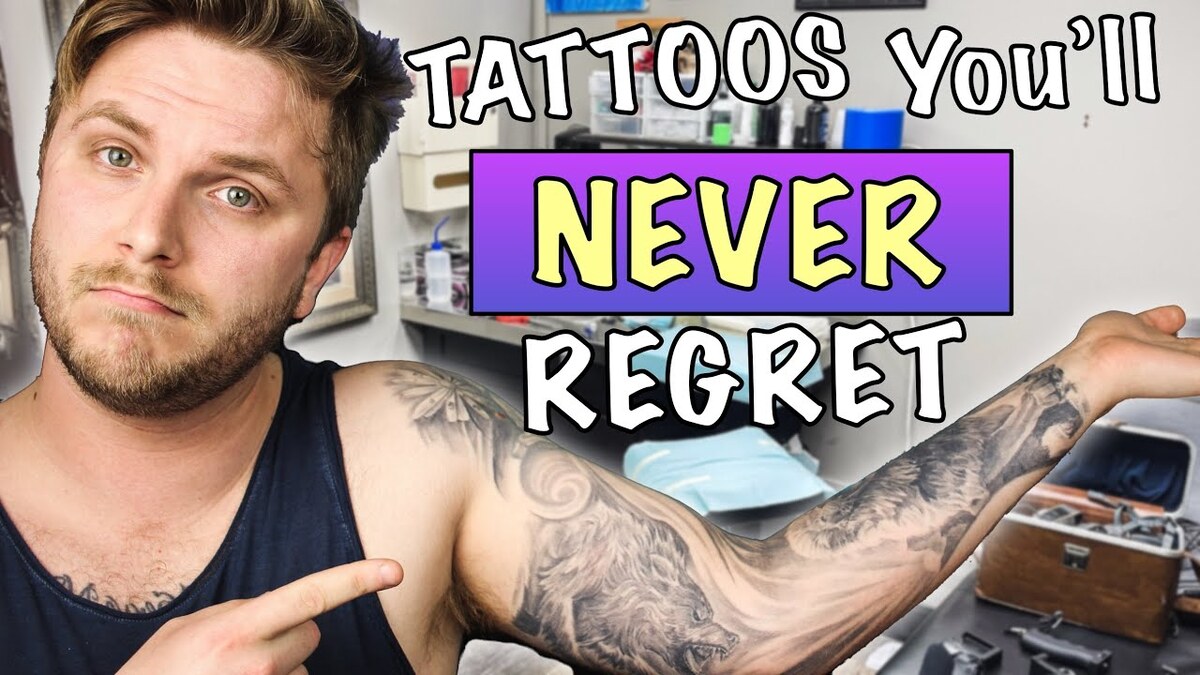Are you considering getting a tattoo but are afraid you won’t like it once it’s on your body? Find out from professionals how to be tattooed without later regretting it.
It’s often said that getting your first tattoo is like getting your first cup of coffee—once you do it, you won’t want to get another one. However, unlike a cup of coffee, a tattoo requires a substantial commitment because it is permanent. Make sure you genuinely love the ink because you’ll see it on your body every single day.
However, that link wanes for some people. Something that used to feel quite intimate can easily become a cause for regret. Over time, the allure of a tattoo that once represented a trend or a moment may fade and become burdensome. When that occurs, removing it appears to be the only choice, and even that procedure might be uncomfortable.
So, can you get a tattoo that you won’t regret? Before you make that long-term choice, you should think about the answer, even though it can be more complicated than you anticipate.
Why do people get inked?
The psychology of getting a tattoo differs greatly from person to person and is impacted by personal choices, societal norms, and emotional states. Aesthetic appeal or a passion for art or culture are the main reasons why individuals acquire tattoos. However, some people also acquire tattoos as a form of self-expression, which can include emotional expression, a sense of belonging and social connection, a snap decision, or even a mark of change, according to Devil’z Tattooz founder Lokesh Verma, who speaks to The Ultimate News.
Furthermore, according to Shaman Ink founder Prashant Yaduvanshi, some people use tattoos as a coping strategy or as a symbolic representation of key life events, personal development, or healing.
“Ultimately, tattoos reflect a person’s unique journey, with their meaning and purpose as individual as the person wearing them,” according to him.
The right spot
Verma claims that because the forearm and side of the wrist are less uncomfortable and provide a smaller surface area for smaller tattoos, individuals typically choose these regions for their tattoos.
Although some regions are more popular than others, Yaduvanshi believes that tattoo placement and design are quite subjective. The back, upper sleeve, and forearm are common locations since they provide plenty of room and cause no discomfort.
In terms of design, a lot of people choose geometric patterns, flowery themes, inspirational sayings, or simple symbols. According to him, the decision ultimately comes down to body type, tattoo meaning, and personal taste.
Should it be visible to you?
“The idea that people should get tattoos in places they can’t see often is subjective and depends on personal preference and psychological reasoning,” says Lokesh Verma.
While many people prefer tattoos in public places, some people don’t. This might be because they don’t want to be overexposed, which could make them bored or less emotionally invested, or it could be because they want to be accepted in their social and professional circles.
Yaduvanshi concurs, stating that the notion that tattoos have to be hidden is frequently based on the fear that a person may eventually become tired of them.
For most people, however, this couldn’t be further from the reality, as tattoos frequently function as treasured mementos, expressions of who they are, or intimate tales that make them happy every time they are seen. In the end, positioning should be in line with the goal of the design as well as personal choice.
The regret
Many people regret getting tattoos because they made rash or impulsive decisions.
“There are teenagers or even some adults who get a tattoo of their lover’s name or initials just because they felt a connection at that moment, which often leads to regrets and eventually coming back in for a cover-up,” Verma explains.
In addition to boredom or snap judgments, regret can result from obtaining a tattoo without carefully analyzing its meaning or significance, or from being influenced by celebrities or trends.
According to Yaduvanshi, “Unhappiness with the outcome can also occur from not researching the artist, placement, or design. However, regret isn’t exclusive to tattoos; it can result from any decision that is made hastily or without giving it enough thought. The important things are to take your time, make sure the tattoo really speaks to you, and pick a talented artist who shares your vision.
No regrets, just ink
It takes meticulous preparation, cautious thought, and responsible decision-making to get a tattoo that you won’t regret.
Selecting the desired style is the first step, followed by selecting the appropriate artist who specialises in that style. Next, arrange for a consultation with them.
Select a tattoo that has deep meaning for you and that speaks to you personally. Steer clear of ephemeral trends, imitating famous tattoos, or choosing designs directly from Pinterest without adding your own touch.
Since the lines may become a little thicker over time, talk about the ideal size to prevent future smudging. Always pay attention to what your artist has to say. After making a decision, position the stencil and check to see whether it feels comfortable.
Even if it takes months or even years, don’t rush; take your time. Try to find something that resonates with you, then research the design you want. Finally, trust your intuition. Don’t get it if your intuition tells you not to.

